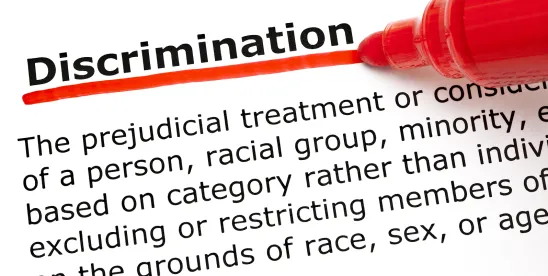On April 17, 2024, the United States Supreme Court issued its opinion in Muldrow v. City of St. Louis, Missouri¸ holding that an employee challenging a job transfer as discriminatory under Title VII of the Civil Rights Act of 1964 needs to show that the transfer only caused “some harm” with respect to an identifiable term or condition of employment. Importantly, the Court concluded that the employee need not show that the harm they suffered was “significant.”
Title VII makes it unlawful for an employer to discriminate against an individual with respect to the terms and conditions of employment on the basis of the individual’s race, color, religion, sex, or national origin.
Jatonya Muldrow, a sergeant with the St. Louis Police Department, filed a lawsuit against St. Louis claiming that she was involuntarily transferred from the Police Department’s Intelligence Division to a patrol position so that the Police Department could replace her with a male police officer. Although her rank and pay remained the same in the new position, other aspects of her employment did not, such as her responsibilities, perks, and schedule.
The district court and Eighth Circuit followed precedent requiring Muldrow to bear the burden of showing both that the transfer affected the conditions of her employment and that the transfer caused her a “materially significant disadvantage”—a burden that the lower courts concluded Muldrow did not carry.
The Supreme Court disagreed with the standard that the lower courts applied. In a unanimous decision, the Court rejected the heightened standard imposed by the Eighth Circuit. Instead, the Court concluded that the language of Title VII required Muldrow to show only that the transfer brought about some disadvantageous change in an employment term or condition based on sex. “Although an employee must show some harm from a forced transfer to prevail in a Title VII suit, she need not show that the injury satisfies a significance test.” In other words, although an employee claiming a discriminatory transfer must still offer evidence supporting the alleged harm, the employee no longer needs to show that the harm was significant.
Practically speaking, Muldrow raises more questions than answers. Although the most obvious result of Muldrow is that the threshold for bringing a Title VII action has been reduced in Circuits with heightened standards, it remains to be seen how district courts around the United States will interpret this opinion. Muldrow provides little guidance for determining what qualifies as “some harm,” and it merely notes that Title VII is intended to target practices that treat an employee “worse” because of that employee’s protected traits. In his concurring opinion, Justice Alito observes that this semantic distinction will likely do little to alter the status quo: “The predictable result of today’s decision is that careful lower court judges will mind the words they use but will continue to do pretty much just what they have done for years.”




 />i
/>i

